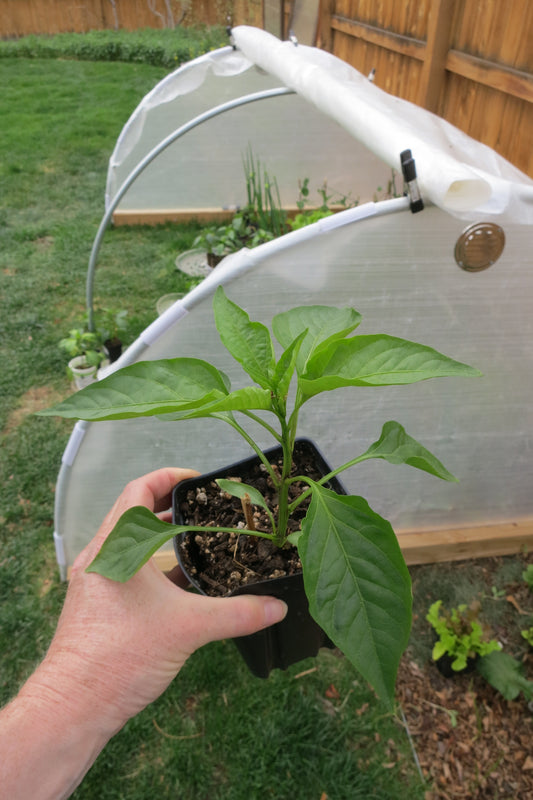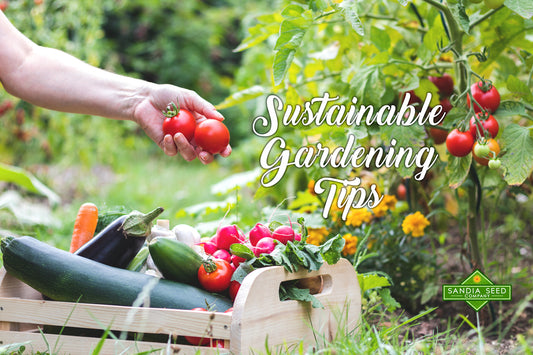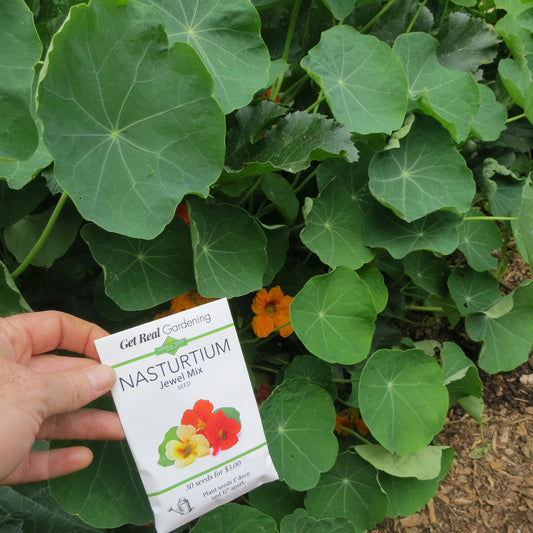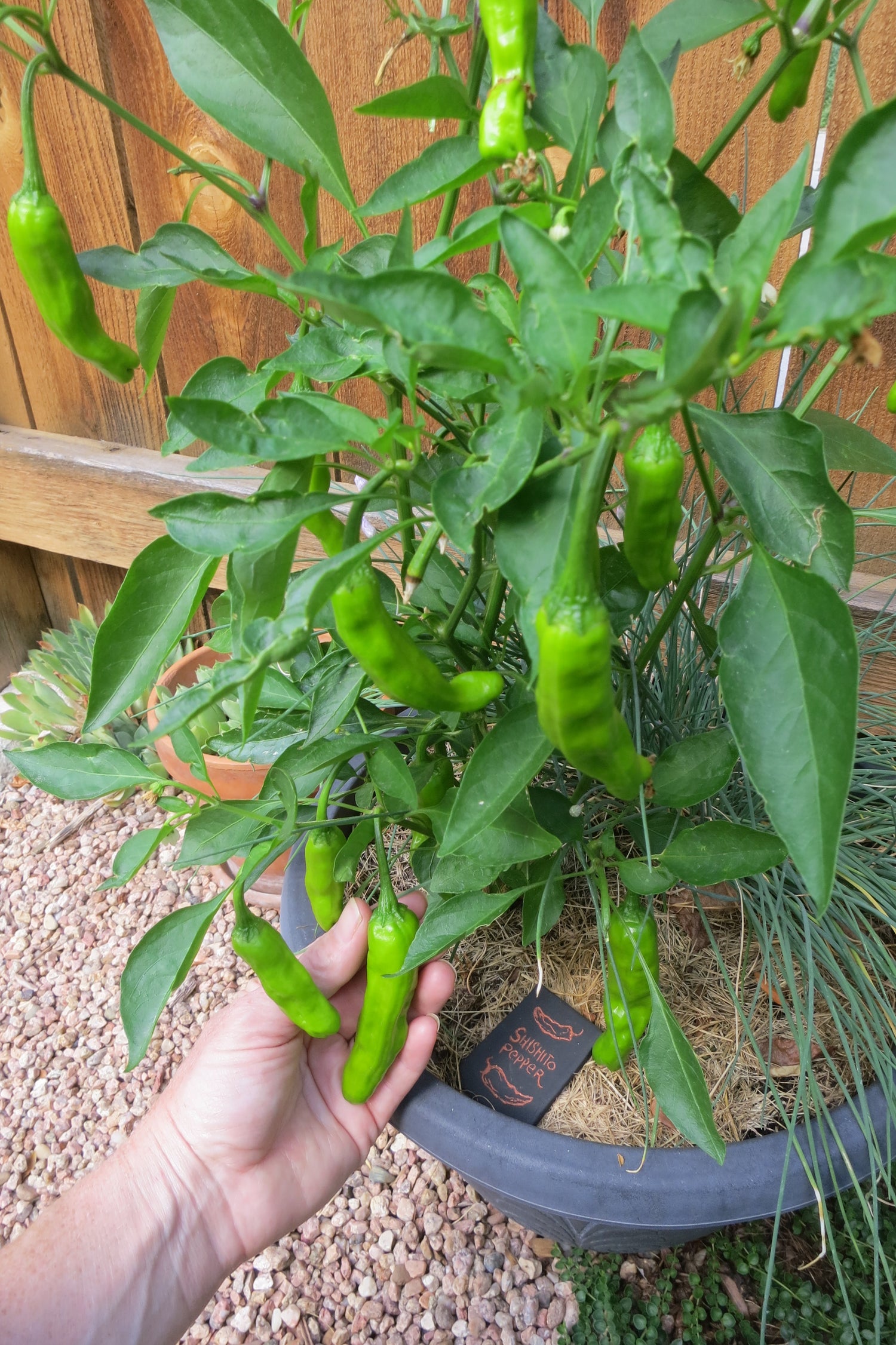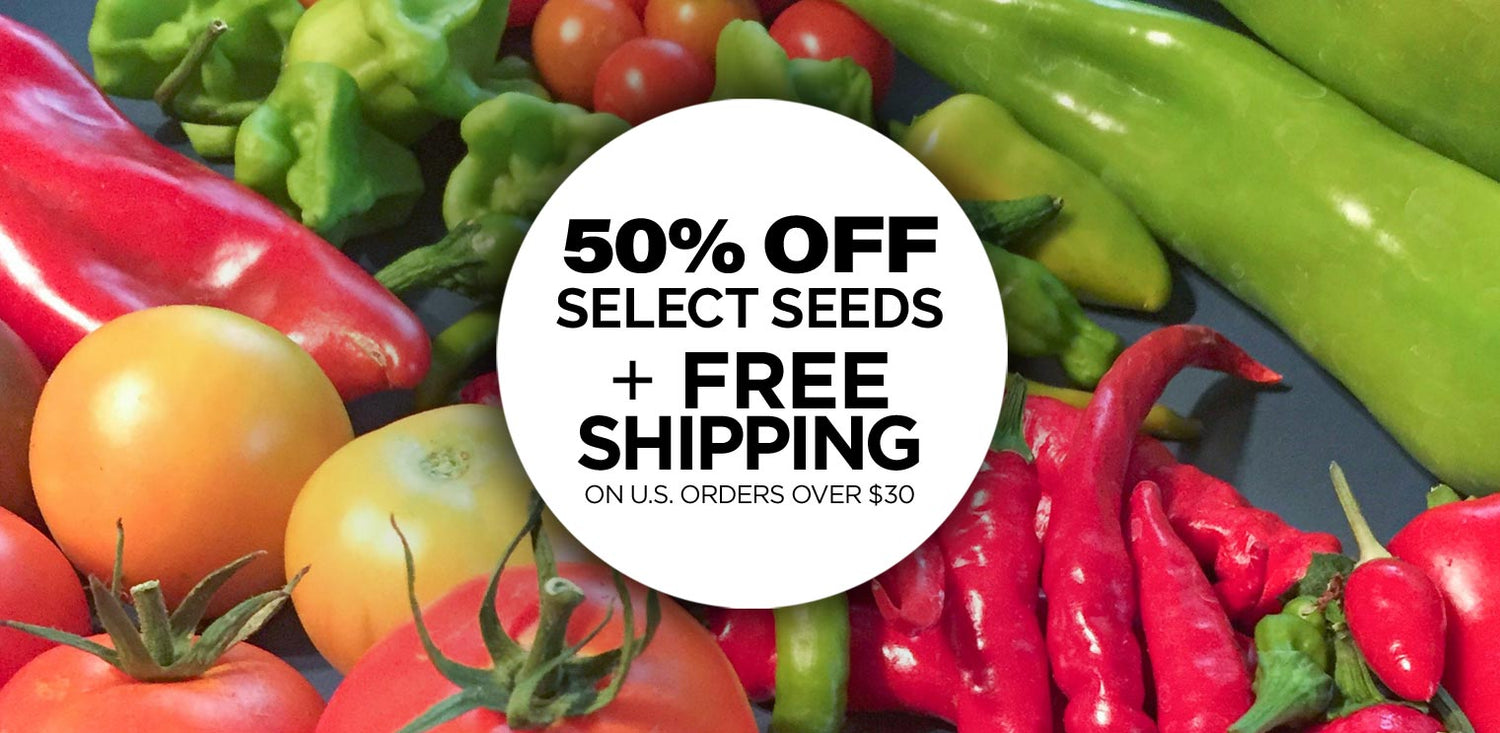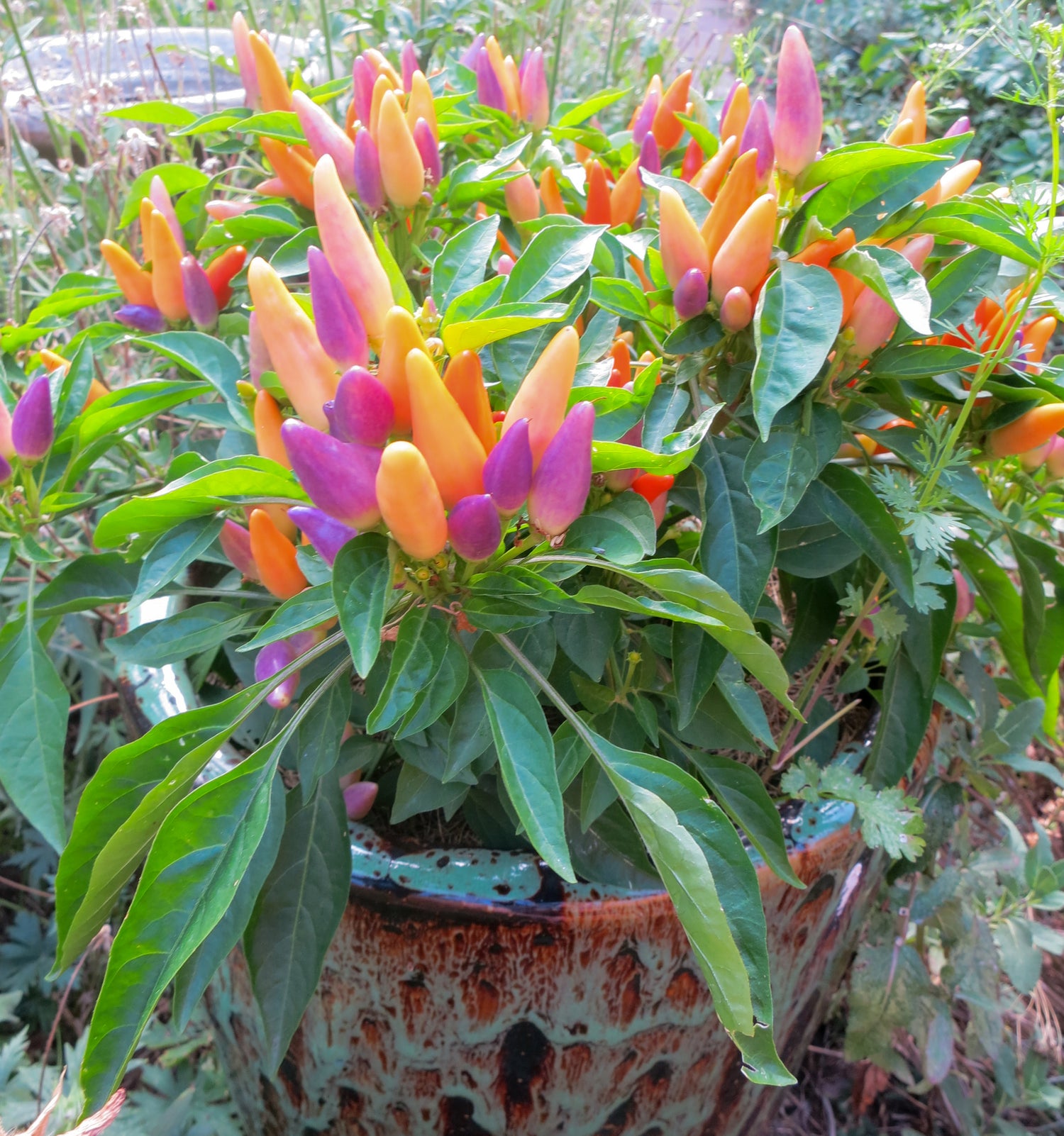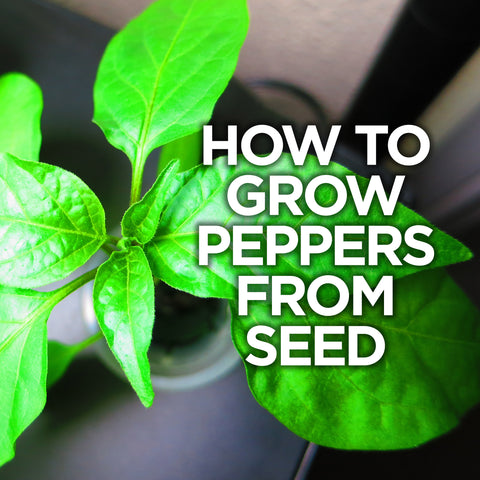
What You will need:
- Pepper seeds
- Indoor/Outdoor potting soil
- Plastic growing tray, at least 2” deep with holes for drainage
- Seed germination warming mat
- Grow light or bright window
- Distilled water
- Labels.
Fill growing tray almost to the top with potting soil. Moisten thoroughly with water and allow to drain completely. Always use distilled water.
Make an indentation with a pencil eraser approx. a quarter of an inch deep or less, about every 2 inches in the soil. Place one pepper seed into each shallow hole and cover gently with soil. Label your tray now by writing on a sticker with a sharpie pen, and place the label on the side of the tray.
Put the growing tray onto the germination mat and warm to 85 degrees F' and place in bright light. Cover with plastic wrap to maintain humidity if needed. Uncover for a few hours each day for air exchange. (When the first seed sprouts, do not use the plastic wrap anymore.) Don't ever let the soil temperature get colder than 70 degrees.
Water the growing tray from the bottom, so the top of the soil and the seeds will not be disturbed. Water often enough to keep the top of the soil moist, so the germinating seeds stay moist.
Most seeds will germinate in 7 to 21 days. Some seeds like the Chocolate Habanero, Fatalii, and Cayenne may take even longer to germinate.
Fertilize every 2 weeks after germination with half strength organic fish fertilizer or superthrive.
After 6 to 8 weeks or longer, when your seedlings have 4 true leaves and a good root system, transplant the little pepper plants outside into your prepared garden. Make sure the soil has warmed and the night temperature no longer drops below 55 degrees at night. If they are planted when it is still cool, they will not grow until it does warm up. The plants can be spaced every 24 - 36 inches. You can also plant them in outdoor containers that hold at least 3 gallons of soil. Do not let the new transplants dry out. You might want to protect them from the hot afternoon sun for one week by providing temporary shade.
Keep your garden soil evenly moist. Peppers do best on a timed watering cycle. You will have to determine the amount of water needed for your soil and weather conditions. Fertilize with organic fertilizer, add calcium if needed, and keep nitrogen to a minimum.
All peppers are perennials when grown in mild winter climates or protected from frost. You can bring your plants inside this fall when the nights drop below 50°F. Your plants will drop their leaves, and then grow new ones. They can be placed back outside in the spring when the nights are consistently above 55°F
The most important information is:
1-Plant seeds only 1/4” deep,
2- Use good water,
3- Keep moist at all times,
4- Keep warm at all times, and
5- Place under grow lights or in bright light during the day.
GOOD LUCK!

